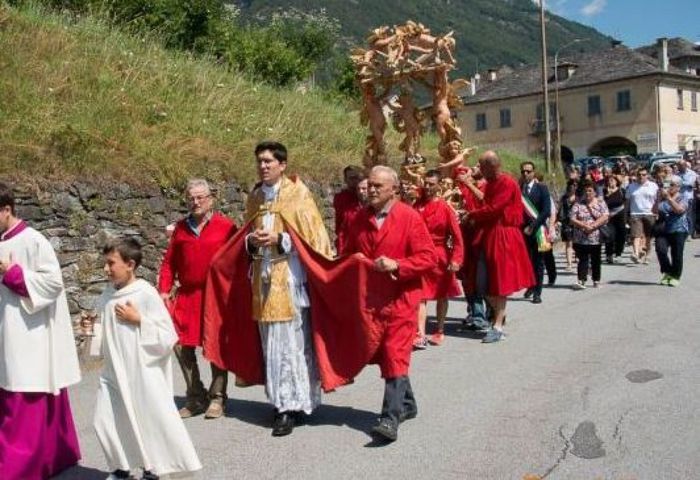Palinurus
The Living Force
Without reading anything of the books yet I've found out that my hunch about Madame Blavatsky was correct.
I simply googled for Godfrey Higgins and for Anacalypsis and found in wikipedia all I need to know. That's why I started with asking you for the name of the writer and the title of his work: to be able to do a search on those items in order to save me a lot of trouble (if only time and energy, but probably more).
It would have been wise when you had done the same before diving in head over heels, if I may say so.
Godfrey Higgins:
Note 6 (a dead link) leads to an article in the magazine Theosophical History (Vol. I, no.3 (July 1985), pp. 46-54) written by Leslie Shepard entitled "The 'Anacalypsis' of Godfrey Higgins - precursor of H.P.B." (starting on page 7 of the given link). Would you have found this early on, this article should have been a strong warning sign, I think.
Same story with Anacalypsis:
To top it off, from the same page:
(All emphases, mine)
All in all, plenty of red flags around; and Laura's estimate is more than only understandable -- it's spot on !
I simply googled for Godfrey Higgins and for Anacalypsis and found in wikipedia all I need to know. That's why I started with asking you for the name of the writer and the title of his work: to be able to do a search on those items in order to save me a lot of trouble (if only time and energy, but probably more).
It would have been wise when you had done the same before diving in head over heels, if I may say so.
Godfrey Higgins:
wikipedia said:Higgins' main writings were part of the syncretism of the day, which was an attempt to associate Biblical narratives to evidence emerging about other religious traditions. Higgins discussed, and argued with, other authors of this tradition such as Jacob Bryant, Roger O'Connor and William Jones. Higgins' own writings, especially Anacalypsis, were later to have a major influence on the development of Theosophy, through the publications of Helena Blavatsky.[6]
Note 6 (a dead link) leads to an article in the magazine Theosophical History (Vol. I, no.3 (July 1985), pp. 46-54) written by Leslie Shepard entitled "The 'Anacalypsis' of Godfrey Higgins - precursor of H.P.B." (starting on page 7 of the given link). Would you have found this early on, this article should have been a strong warning sign, I think.
Same story with Anacalypsis:
wikipedia said:The word anacalypsis comes from the Greek ανακάλυψης, which can be translated as «discovery» or «find». Anacalypsis is the antonym of "apocalypse." In the Higgins´ book, the meaning of the word is twofold:
- On the one hand, the idea of anacalypsis is seen as something that is evident, transparent and clear, while the apocalyptic is mysterious, dark, and enigmatic.
- On the other hand, apocalypse means revelation and refers to the last canonical book of the New Testament, Revelation, which states that the world is heading for an imminent and tragic end.
Regarding to the second meaning, it is very important to understand that in the Higgins´ book anacalypsis does not refer to a teleological principle, but a regression towards the beginning that allows us to see through light how myths were created, precisely like the apocalypse in many religions. In fact, the title of the work speaks precisely about this unveiling from the Egyptian goddess Isis. The idea of anacalypsis as "unveiling" was discussed in depth by the Russian-born writer and theosophist Helena Blavatsky in her book Isis Unveiled.
To top it off, from the same page:
wikipedia said:Higgins died before he was able to complete the final chapter on Christianity. Higgins leaves clues, however, that there may be additional layers of meaning in his work, stating in the preface to Vol. I of 'Anacalypsis':
I think it right to warn my reader, that there are more passages than one in the book, which are of that nature, which will be perfectly understood by my Masonic friends, but which my engagements prevent me explaining to the world at large.[9]
Decades later, John Ballou Newbrough cited extensively to the Anacalypsis, including Higgins' use of Pandeism, in the notes to Newbrough's 1882 Oahspe Bible.[10] Similar, possibly related coinings of Pandeism have occurred elsewhere. One author writes of a contemporary religious group in Bali (which is within the geographic realm of Pandeism described by Higgins):
The empu uses a typical pedanda ketu, "crown" which is tall and red, and a ball. Another man leads Pande ceremonies on the island. He represents a curious mix of Buddhism, Hinduism, and, if it can be called this, "Pandeism".[11]
(All emphases, mine)
All in all, plenty of red flags around; and Laura's estimate is more than only understandable -- it's spot on !





